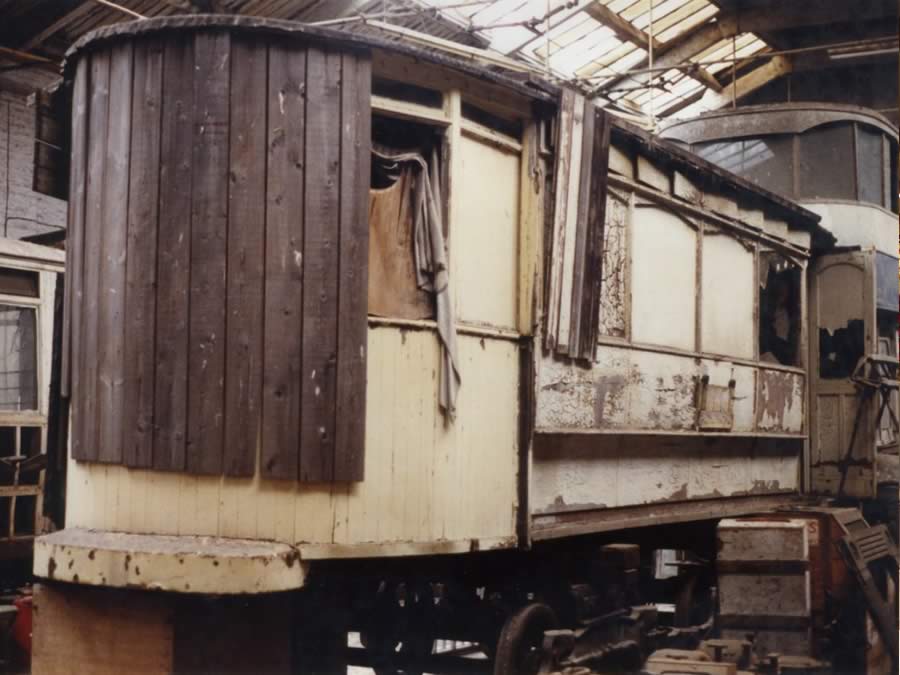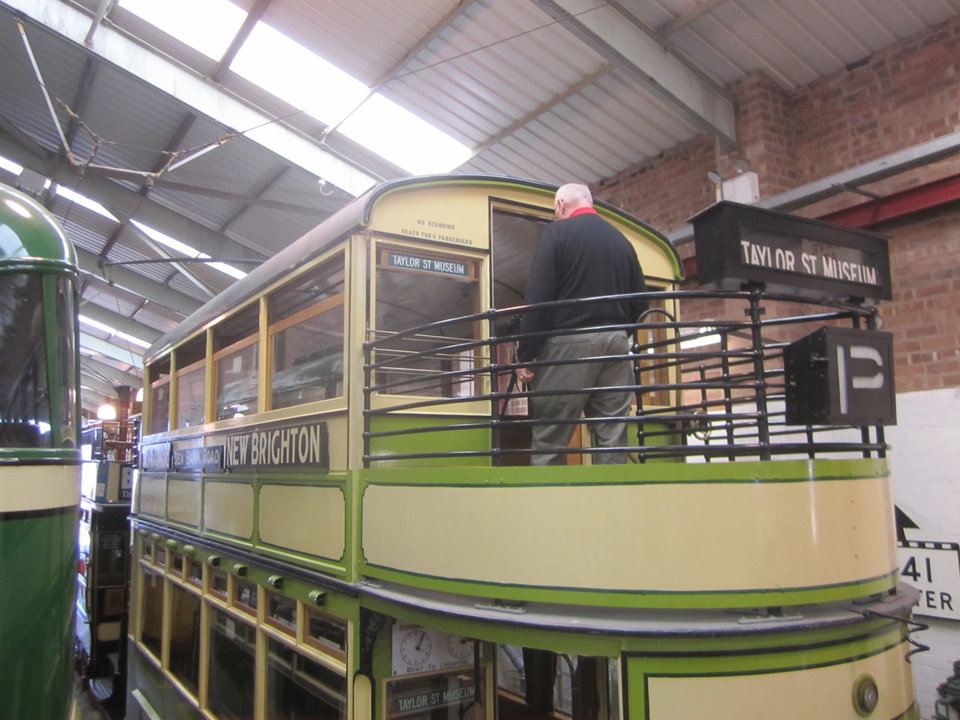Hull City Tramways Milnes tramcar

Photo: Paul Abell
Not a lot is known about this particular tramcar beyond the fact that it served as a beach chalet in Hornsea for a time following its withdrawal from service. However, it is thought to have been an open-topped tramcar that was supplied to Hull City Tramways in 1903 by Milnes of Hadley, in Shropshire.
Although double deck steam trams had traditionally been covered (partly to protect passengers from steam and soot particles), the earliest double deck electric tramcars were exclusively open topped, as in this case. The most likely explanation for this seemingly backward step is that the protruding trolley standard would presumably have presented manufacturers of electric tramcars with tricky construction challenges.
While open topped tramcars were understandably popular during summer weather in coastal resorts, passenger demand in urban areas was greatest, not surprisingly, during wet and wintry weather. In conditions such as these, open top decks were decidedly off-putting, which effectively halved the useable seating capacity at times of maximum demand.
From very early on, therefore, the hunt was on for a satisfactory solution to this problem. The earliest attempts involved the use of temporary or removable top covers that could be dismantled when not required while affording better protection for upper deck passengers when conditions were inclement.
By 1902, the main phase of electric tramway construction in Britain was drawing to a close and the initial surge of orders for new tramcars had mainly been satisfied. It was at this stage that tramcar manufacturers began to turn their attention to the manufacture and sale of top covers to the operators of the massive fleets of open topped tramcars, in the hope of maintaining full order books.
Specification
- Type of tram
- Electric 4-wheel double deck passenger tram built as an open-topped car but fitted with covered tops before entering service
- Livery
- Maroon and cream
- Seating capacity
- 58 (36 on top deck; 22 downstairs)
- Date built
- 1903
- Date entered service
- 1903/4
- Manufacturer of body
- Milnes of Birkenhead
- Manufacturer of truck
- Originally Brill 21E
- Gauge
- 4’ 8½”
- Motor
- Originally 2x Westinghouse 25 hp
- Controller
- ???
- Current collector
- Trolley pole
- Modification
1903/4 fitted with Magrini adjustable four bay top cover before entering service.
1907 new fixed top cover fitted
Most of the class were fitted with enclosed balconies and vestibule platforms and the original reversed stairs were replaced by standard stairs at this point.- Withdrawn from service
Thought to be 1945. Withdrawal of this particular batch of trams took place incrementally between 1925 (113) and 1945 though several were sold on to Leeds City Transport.
- Subsequent history
Not known
- Restoration history
Original intention was to restore the body as a short canopied top covered tram to fill a major gap in the collection until a more suitable contender was discovered for this project..
- Current status
- Stored off-site in incomplete and unrestored condition
- Date started operating at Crich
- N/A
- Total mileage covered at Crich
- N/A
- Current location
- Off-site storage facility
- 1904 – 1945Operational on original tramway
- 1945 – 1970sDismantled and converted into beach chalet
- 1970s – Transferred to off-site storage facility, where it remains


